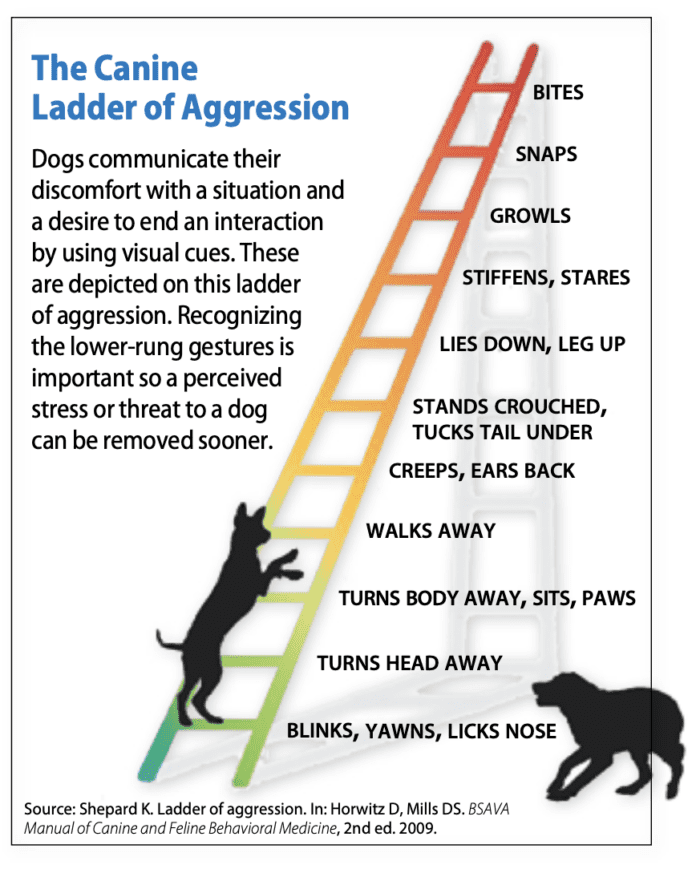Dogs don’t act aggressively to strut their stuff or show who’s dominant. That’s a human thing. Canine aggression is a response to what a dog perceives as a threat. With aggressive behavior, the dog is trying to deflect the threat and restore harmony. Dogs so want harmony, in fact, that most of the rungs on the Canine Ladder of Aggression, a graphic devised by British veterinary surgeon and behaviorist Kendal Shepherd, BVSc, are not acts of aggression at all but signs of appeasement. They include such behaviors as yawning, nose licking, and turning away. They all mean “I’m uncomfortable; you’re making me anxious. Can you please stop doing the thing that’s making me feel stressed and unsafe?”
It’s only when those signs are unheeded or responded to inappropriately (from the dog’s point of view) that a canine progresses to shows of aggression that people recognize more easily for what they are— growling, snapping, biting.
If you see a dog engaging in any of the behaviors on the bottom rung of the ladder, take them seriously. Stop interacting with the animal in the way you have been. Your backing off does not make the dog the boss. It makes you respectful of the animal’s communication that he is feeling unsafe or unnerved.
Not always a clearly predictable progression
Unfortunately, a dog does not always climb the ladder of aggression in an easy-to-recognize, rung-by-rung fashion. He might go from the first rung to the top one within seconds if the perceived threat catches him by surprise or happens very close to him. And over time, if efforts to appease have not worked — either they have been misunderstood or reacted to in an inappropriate manner — he may skip rungs near the bottom.
Such rung-skipping may seem out of the blue. But the dog is not acting erratically. He feels he is under an inescapable threat that past experience has taught him will not go away with appeasing gestures.
That said, do commit to memory the gestures at the bottom of the ladder. Responding to them may very well help protect you from a scared dog who might otherwise feel the need to protect himself more proactively.





